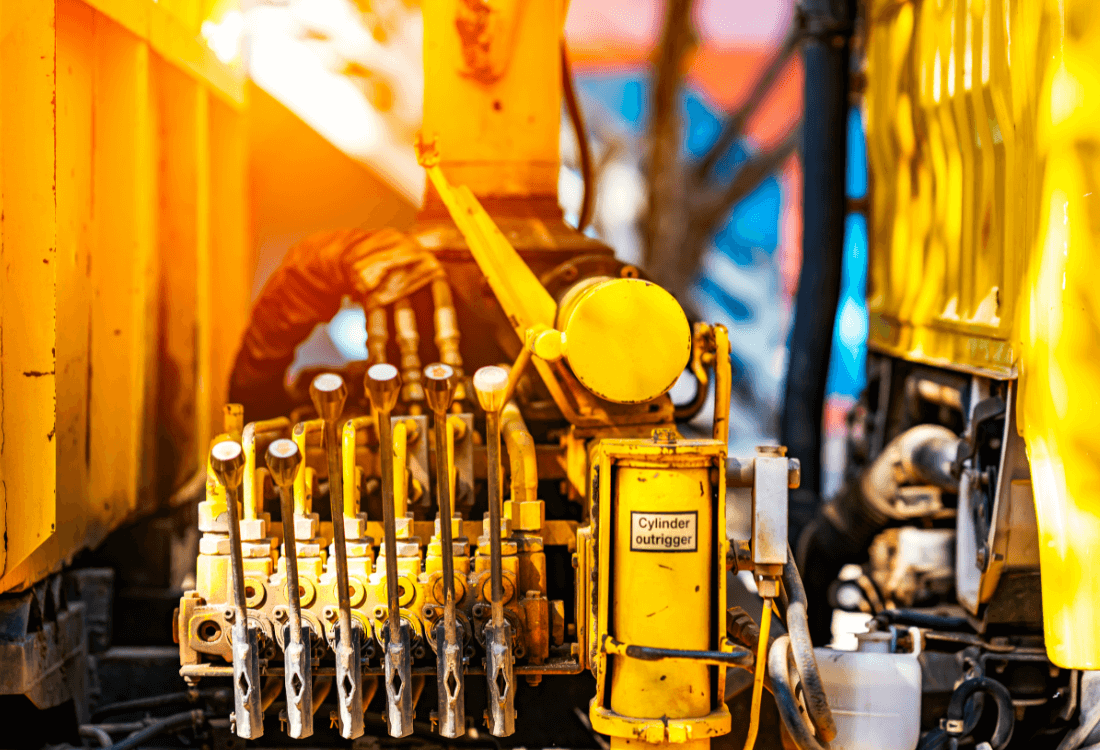Hydraulic engineering is, first and foremost, a practical discipline, and although many fluid power systems and processes have been successfully used in industry for decades, if not centuries, the sector is no stranger to innovation.
As 2024 unfolds, a wave of advanced hydraulic technologies is reshaping the face of hydraulic engineering, with profound implications for how design engineers, OEMs, and manufacturers create fluid power applications.

1. AI: The New Voice In Predictive Maintenance And System Optimisation
Artificial Intelligence (AI) and machine learning (ML) bring with them an unprecedented level of precision to both predictive maintenance and system optimisation. Endowed with the cognitive abilities of AI applications, hydraulic engineers can continually assess and predict potential failure points with an accuracy previously unattainable by pre-AI systems.
With the capacity to dissect droves of data – from temperature to pressure differentials – in real time, AI avoids the need for long periods of downtime and periodic shutdowns for inspections. Predictive maintenance systems sound the alarm not just before something breaks, but often before it even falters. The impact on hydraulic applications is colossal: downtime is slashed, critical issues are foreseen and avoided, and maintenance is transformed into an as-needed task, not an oft-neglected chore.
System optimisation is another area being transformed by AI. AI and ML applications are now not only predicting but also helping to shape the very ebb and flow of hydraulic systems. For example, by leveraging data analytics, complex AI algorithms can now tailor the workings of many fluid power systems to enhance performance under varying operating conditions. This dynamic adaptability helps fine tune hydraulic systems to improve overall efficiency and response time.
2. IOT Integration In Modern Hydraulic Systems
People have been talking about the Internet of Things (IOT) since at least 2016, but 2024 is turning out to be a watershed year for bringing the IOT from the realm of ideas into reality. A range of IOT-enabled sensors now pervade hydraulic systems, making them smarter and more interconnected. The stream of data flowing from the sensors can be harnessed to give near term or even real-time insights into the health and efficiency of hydraulic components, facilitating informed decision-making and proactive maintenance.
With a network of accurate and connected sensors comes a greater potential for remote diagnostics to and from remote locations – e.g. offshore wind farms – enabling engineers to troubleshoot problems without being physically present, and often resolving problems in a fraction of the time it previously took. This vital benefit of the IOT not only saves operational expenses but also reduces reliance on local expertise, making it invaluable for projects in hazardous or remote regions.
3. Advances In Hydraulic Lubricants And Fluids
It is not only software changes that are transforming the realm of hydraulic engineering, but a green revolution in hydraulic fluids and lubricants. 2024 is expected to see the wider availability of biodegradable hydraulic fluids, designed to minimise environmental impact by breaking down over time without leaving a damaging chemical trail.
Sustainability innovations have also gone hand-in-hand with performance enhancement. Innovations in hydraulic fluids, for example, can now infuse fluids with additives that enhance wear protection, oxidation resistance, and viscosity index. The result is a range of hydraulic fluids that not only take better care of the planet but also lengthen the life of a hydraulic system, setting a new benchmark for performance and efficiency.
Find Out More
At Hydrastar, we supply a wide range of advanced fluid power components from some of the world’s most innovative and forward-thinking suppliers and can help you improve the efficiency and sustainability of any fluid power application. To find out more, please contact one of our experienced team today by clicking here.


